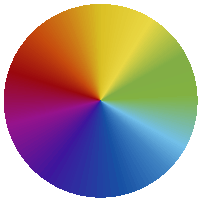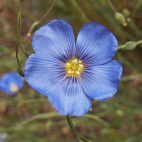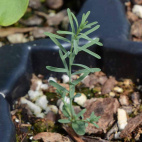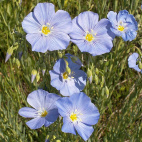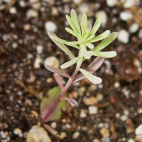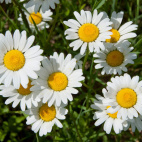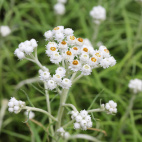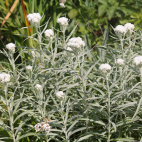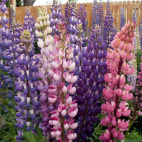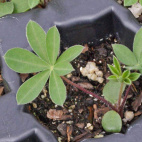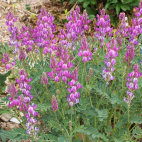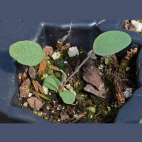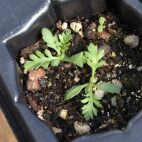Color
Availability
USDA Zone
Region
Type
Duration
Season
Germination
Soil
Sunlight
Height
Use
Narrow Your Search
Color
Availability
USDA Zone
Region
Type
Duration
Season
Germination
Soil
Sunlight
Height
Use
Wildflower Seeds - Northern Region
The Northern region is home to our Canadian friends in the eastern provinces, as well as the northern-most part of the Eastern US. This area is characterized by a long, cold winter with lots of snow, and a short humid summer that only lasts about 3 or 4 months. Most of the area is classified as a UDSA Growing Zone 4 or less, and the species that grow here have interesting ways to perpetuate themselves in spite of the short growing season. There are a lot of forests and wetlands in this region, so adequate moisture is hardly ever a problem. Look up your growing zone to make sure that the Northern wildflower seeds that you want to grow are winter hardy. Alternatively, just order annual flower seeds online so that the plant does not need to make it through the winter, but can reseed itself and come back from seed the next year.
-
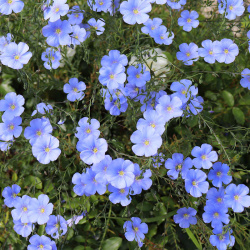 On Sale!
Blue Flax Seeds
Linum perrene
See the sky reflected in a sea of these heavenly blue blooms. This perennial is fast-growing and looks best as a mass planting. It is hard to imagine how this Linum Perrene plant produces such a vibrant color from just water and dirt.Quick View$3.48 Pkt - $7.65 / Oz
On Sale!
Blue Flax Seeds
Linum perrene
See the sky reflected in a sea of these heavenly blue blooms. This perennial is fast-growing and looks best as a mass planting. It is hard to imagine how this Linum Perrene plant produces such a vibrant color from just water and dirt.Quick View$3.48 Pkt - $7.65 / Oz -
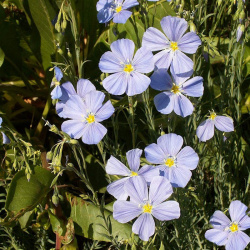 Lewis Flax Seeds
Linum lewisii
This western native grows in lovely, pale blue profusion, and is named after the Lewis and Clark expedition. It is similar to Blue Flax but is a little shorter, and not quite as vivid. Some gardeners like to mix the two varieties to create a bit more texture in the planting. This perennial is very easy to grow and looks great when planted en masse.Quick Viewx
Lewis Flax Seeds
Linum lewisii
This western native grows in lovely, pale blue profusion, and is named after the Lewis and Clark expedition. It is similar to Blue Flax but is a little shorter, and not quite as vivid. Some gardeners like to mix the two varieties to create a bit more texture in the planting. This perennial is very easy to grow and looks great when planted en masse.Quick ViewxLewis Flax Seeds
Linum lewisii
This western native grows in lovely, pale blue profusion, and is named after the Lewis and Clark expedition. It is similar to Blue Flax but is a little shorter, and not quite as vivid. Some gardeners like to mix the two varieties to create a bit more texture in the planting. This perennial is very easy to grow and looks great when planted en masse.
$3.48 Pkt - $12.65 / Oz -
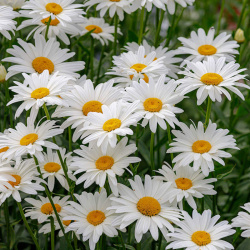 Ox Eye Daisy Seeds
Chrysanthemum leucanthemum
The famous "He Loves Me, He Loves Me Not" Daisy brings sunshine wherever it blooms. Originating in Europe, the hardy flower spread rapidly to other continents and can become invasive. Cannot ship to CO, OH, MT, ND, WA, or WY States.Quick View$2.98 Pkt - $7.52 / Oz
Ox Eye Daisy Seeds
Chrysanthemum leucanthemum
The famous "He Loves Me, He Loves Me Not" Daisy brings sunshine wherever it blooms. Originating in Europe, the hardy flower spread rapidly to other continents and can become invasive. Cannot ship to CO, OH, MT, ND, WA, or WY States.Quick View$2.98 Pkt - $7.52 / Oz -
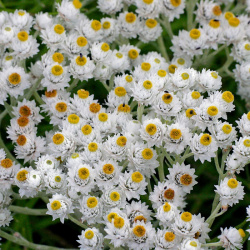 Out Of Stock
Pearly Everlasting Seeds
Anaphalis margaritacea
Often used in traditional dried flower arrangements, pearly everlasting keeps its texture and whiteness for years after it is cut. The attractive plant is also a favorite for butterflies.Quick View$3.96 Pkt - $400.00 / Oz
Out Of Stock
Pearly Everlasting Seeds
Anaphalis margaritacea
Often used in traditional dried flower arrangements, pearly everlasting keeps its texture and whiteness for years after it is cut. The attractive plant is also a favorite for butterflies.Quick View$3.96 Pkt - $400.00 / Oz -
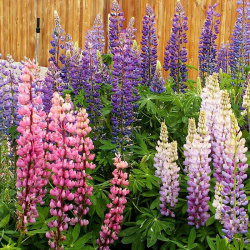 On Sale!
Russell Lupine Seeds
Lupinus polyphyllus
Brilliant and bold in a rainbow of colors; this Lupine variety will provide colorful blooms all season. This flower is a cultivated variety of a Lupine that is native to the Pacific Northwest. It grows so quickly and easily that it can almost be invasive with the right growing conditions.Quick Viewx
On Sale!
Russell Lupine Seeds
Lupinus polyphyllus
Brilliant and bold in a rainbow of colors; this Lupine variety will provide colorful blooms all season. This flower is a cultivated variety of a Lupine that is native to the Pacific Northwest. It grows so quickly and easily that it can almost be invasive with the right growing conditions.Quick ViewxRussell Lupine Seeds
Lupinus polyphyllus
Brilliant and bold in a rainbow of colors; this Lupine variety will provide colorful blooms all season. This flower is a cultivated variety of a Lupine that is native to the Pacific Northwest. It grows so quickly and easily that it can almost be invasive with the right growing conditions.
$3.48 Pkt - $8.20 / Oz -
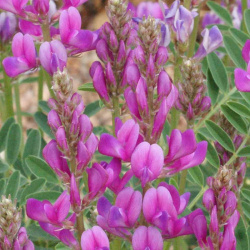 Utah Sweetvetch Seeds
Hedysarum boreale
These showy, deep pink clusters bloom above lush leguminous leaves. This native semi-desert Hedysarum Boreale plant makes a great addition to a perennial bed, especially in areas with a lot of heat and drought.Quick View$3.48 Pkt - $18.77 / Oz
Utah Sweetvetch Seeds
Hedysarum boreale
These showy, deep pink clusters bloom above lush leguminous leaves. This native semi-desert Hedysarum Boreale plant makes a great addition to a perennial bed, especially in areas with a lot of heat and drought.Quick View$3.48 Pkt - $18.77 / Oz -
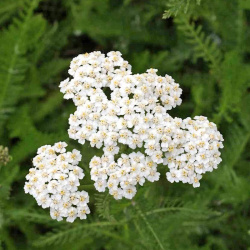 Western Yarrow Seeds
Achillea millefolium occidentalis
Growing clusters of small white flowers and feathery foliage, this is one of the most common wildflowers in the western United States. Yarrow makes an excellent pollen source in arid conditions.Quick View$2.98 Pkt - $9.54 / Oz
Western Yarrow Seeds
Achillea millefolium occidentalis
Growing clusters of small white flowers and feathery foliage, this is one of the most common wildflowers in the western United States. Yarrow makes an excellent pollen source in arid conditions.Quick View$2.98 Pkt - $9.54 / Oz
The Northern region is home to our Canadian friends in the eastern provinces, as well as the northern-most part of the Eastern US. This area is characterized by a long, cold winter with lots of snow, and a short humid summer that only lasts about 3 or 4 months. Most of the area is classified as a UDSA Growing Zone 4 or less, and the species that grow here have interesting ways to perpetuate themselves in spite of the short growing season. There are a lot of forests and wetlands in this region, so adequate moisture is hardly ever a problem. Look up your growing zone to make sure that the Northern wildflower seeds that you want to grow are winter hardy. Alternatively, just order annual flower seeds online so that the plant does not need to make it through the winter, but can reseed itself and come back from seed the next year.

